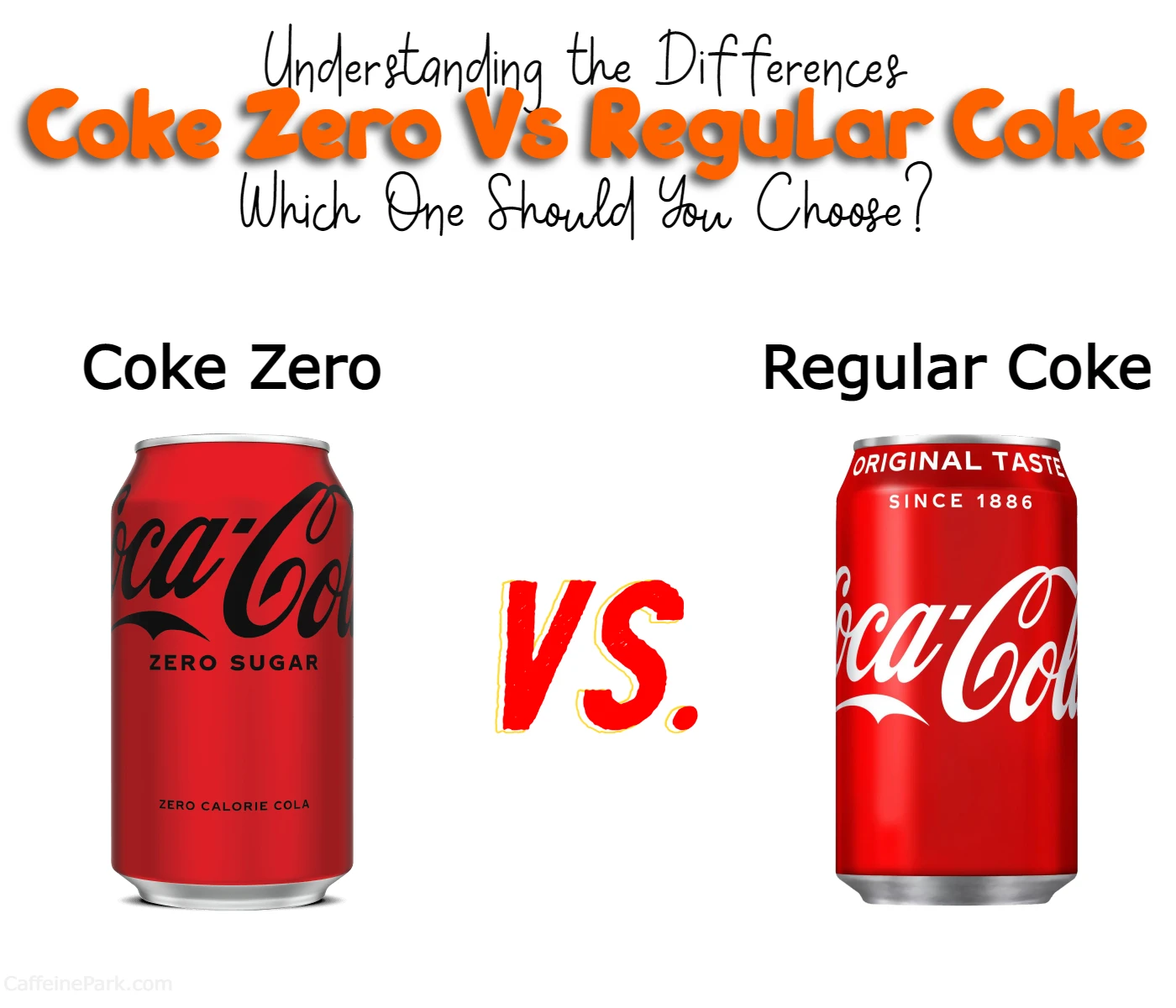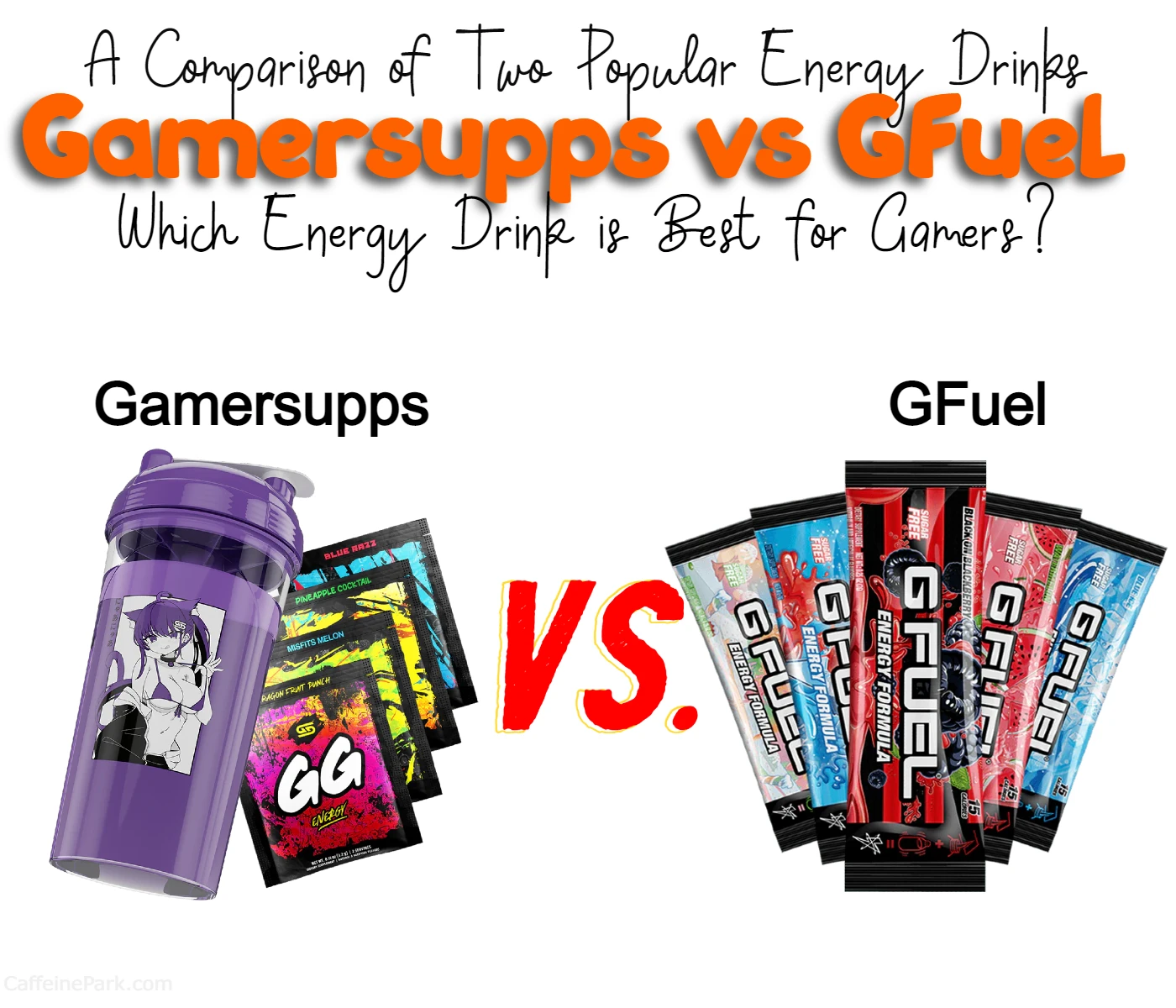Coke Zero vs Coke

Are you a fan of Coca-Cola but unsure which variety to choose? You’re not alone! Many people are curious about the differences between Coke and Coke Zero. While both drinks are made by the same company and have similar branding, there are some key differences between them that could impact your choice.
In this blog post, we’ll explore the differences between Coke and Coke Zero so you can make an informed decision about which one to choose. We’ll take a closer look at the ingredients, calories and sugar content, caffeine levels, taste, packaging, and target audience. We’ll also discuss the potential health effects of each drink and what you need to know before making your choice.
So, whether you’re a die-hard Coke fan or curious about trying Coke Zero, read on to the end of this blog post to learn more. We’ll provide you with all the information you need to make the right choice for your taste buds and your health.
Here is a summary of the main differences between Coke and Coke Zero:
| Category | Coke | Coke Zero |
|---|---|---|
| Ingredients | High-fructose corn syrup or sugar | Artificial sweeteners such as aspartame and acesulfame potassium |
| Calories | 140 calories per 12-ounce serving | Calorie-free |
| Sugar | 39 grams of sugar per 12-ounce serving | Contains no sugar |
| Caffeine | 34 mg of caffeine per 12-ounce serving | 34 mg of caffeine per 12-ounce serving |
| Taste | Sweet, traditional taste | Slightly different taste due to the use of artificial sweeteners |
| Packaging | Broad audience with classic design | Marketed towards men with a more masculine design |
| Health Effects | Regular consumption has been linked to weight gain, metabolic disorders, and other health problems | Contains no sugar, but some studies have suggested that artificial sweeteners may have negative health effects. More research is needed to fully understand the potential risks. |
Difference Between Coke Zero and Regular Coke
History of Coke and Coke Zero
Coca-Cola, also known as Coke, was first introduced in 1886 by John Pemberton. It quickly became a popular drink, and today it is sold in more than 200 countries worldwide. Over the years, Coca-Cola has released several variations of the original drink, including Diet Coke, Coke Zero, and Coca-Cola Life.
Coke Zero was first introduced in 2005 as a low-calorie alternative to regular Coke. It was marketed towards men who wanted the taste of regular Coke without the calories. In 2017, Coca-Cola replaced Coke Zero with a new version called Coke Zero Sugar, which has a slightly different recipe.
Ingredients
Coke and Coke Zero have similar ingredients, but there are a few key differences. Both drinks contain carbonated water, high fructose corn syrup, caramel color, phosphoric acid, natural flavors, caffeine, and phosphorus. However, Coke Zero contains potassium citrate, acesulfame potassium, and potassium benzoate, while regular Coke does not.
Calories and Sugar
One of the main differences between Coke and Coke Zero is the number of calories and sugar they contain. Regular Coke contains 140 calories and 39 grams of sugar per 12-ounce can. In comparison, Coke Zero has zero calories and zero grams of sugar.
Caffeine Content
Coke and Coke Zero also have the same amounts of caffeine content. Regular Coke contains 34 mg of caffeine per 12-ounce can, and Coke Zero contains 34 mg per 12-ounce can.
Taste
The most significant difference between Coke and Coke Zero is the taste. Regular Coke has a sweet, syrupy taste that is unmistakable. Coke Zero, on the other hand, has a slightly different taste that some people describe as more crisp and refreshing. Some people also find that Coke Zero has a slightly artificial aftertaste.
Packaging and Availability
Coke and Coke Zero are both widely available and come in a variety of packaging options. Both drinks are sold in cans and bottles of various sizes, including 12-ounce cans, 20-ounce bottles, and 2-liter bottles.
Coke Zero Sugar is now the standard version of Coke Zero in many countries, including the United States. However, some countries still sell the original version of Coke Zero.
Marketing and Target Audience
Coke and Coke Zero are marketed toward different audiences. Regular Coke is marketed toward everyone and is often associated with happiness, friendship, and good times. In contrast, Coke Zero is marketed toward men and is often associated with sports, action, and adventure. The packaging and branding for Coke Zero are also more masculine, with a sleek black design and bold lettering.
Health Effects
There has been much debate over the health effects of regular Coke and Coke Zero. Regular Coke is high in sugar and calories, which can contribute to weight gain and other health problems if consumed in excess. On the other hand, Coke Zero is calorie-free and contains no sugar, making it a popular choice for those trying to lose weight or watch their sugar intake.
However, some studies have suggested that artificial sweeteners, such as those found in Coke Zero, may have negative health effects. For example, a study published in the journal Nature found that artificial sweeteners can alter the microbiome in the gut, which may lead to metabolic disorders and other health problems.
Additionally, some studies have linked diet soda consumption to an increased risk of certain health conditions, such as stroke, heart attack, and type 2 diabetes. However, it is important to note that these studies have been met with some controversy, and more research is needed to fully understand the potential health effects of diet soda.
Which One is Better?
Whether Coke or Coke Zero is better for you really depends on your personal preferences and health goals.
If you’re looking for a calorie-free alternative to regular Coke, then Coke Zero may be a better choice. It contains no sugar and fewer calories, making it a good option for those who want to cut back on their sugar intake or are trying to lose weight.
However, if you prefer the taste of regular Coke and don’t mind the extra calories and sugar, then there’s nothing wrong with enjoying it in moderation as part of a balanced diet.
It’s important to remember that neither Coke nor Coke Zero is a particularly healthy drink. Regular consumption of sugary drinks like Coke has been linked to weight gain, metabolic disorders, and other health problems, while some studies have suggested that artificial sweeteners like those found in Coke Zero may have negative health effects.
In general, it’s best to limit your consumption of sugary drinks and opt for water, unsweetened tea, or other healthier alternatives whenever possible.
Conclusion
In conclusion, Coke and Coke Zero are two popular varieties of Coca-Cola with some key differences. Regular Coke is high in calories and sugar, while Coke Zero is calorie-free and contains no sugar. Coke Zero also has a slightly different taste and is marketed toward men with a more masculine design. However, some studies have suggested that artificial sweeteners, such as those found in Coke Zero, may have negative health effects, although more research is needed to fully understand the potential risks.
Ultimately, the choice between Coke and Coke Zero comes down to personal preference and individual health goals. If you enjoy the taste of regular Coke and are not concerned about the calories or sugar content, then go ahead and enjoy it in moderation. If you are watching your weight or sugar intake, or simply prefer the taste of Coke Zero, then it may be the better choice for you. Whatever you choose, remember to always drink in moderation and make healthy choices for your body.
Facts
- Ingredients: Coke contains high-fructose corn syrup or sugar, while Coke Zero contains artificial sweeteners such as aspartame and acesulfame potassium.
- Calories and sugar: Coke has 140 calories and 39 grams of sugar per 12-ounce serving, while Coke Zero is calorie-free and contains no sugar.
- Caffeine: Both Coke and Coke Zero contain caffeine, and have the same amounts of caffeine Coke (34 mg per 12-ounce serving) and Coke Zero (34 mg per 12-ounce serving).
- Taste: Coke has a sweet, traditional taste, while Coke Zero has a slightly different taste due to the use of artificial sweeteners.
- Packaging: Coke is marketed towards a broad audience and has a classic design, while Coke Zero is marketed towards men with a more masculine design.
- Health effects: Regular consumption of sugary drinks like Coke has been linked to weight gain, metabolic disorders, and other health problems. Some studies have also suggested that artificial sweeteners, such as those found in Coke Zero, may have negative health effects, although more research is needed to fully understand the potential risks.
FAQs
The main difference between Coke and Coke Zero is that Coke contains sugar or high-fructose corn syrup, while Coke Zero contains artificial sweeteners.
If you’re watching your weight, Coke Zero may be a better choice as it is calorie-free and contains no sugar. However, keep in mind that regular consumption of sugary drinks like Coke has been linked to weight gain and other health problems.
Coke Zero has a slightly different taste compared to regular Coke, as it uses artificial sweeteners instead of sugar. Some people find the taste of Coke Zero to be similar to regular Coke, while others find it to be slightly different.
Both Coke and Coke Zero have their pros and cons when it comes to health. Regular consumption of sugary drinks like Coke has been linked to weight gain, metabolic disorders, and other health problems. While Coke Zero is calorie-free and contains no sugar, some studies have suggested that artificial sweeteners may have negative health effects, although more research is needed to fully understand the potential risks.
Coke is marketed toward a broad audience, while Coke Zero is marketed toward men with a more masculine design. However, both drinks are available for anyone to consume regardless of gender.
Read More:





